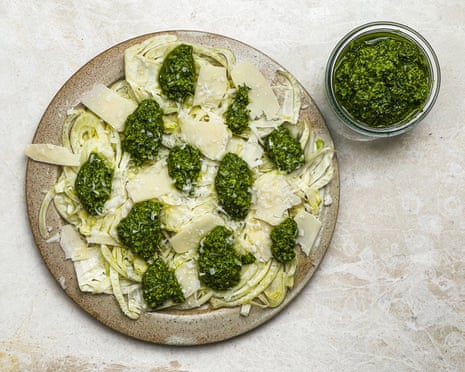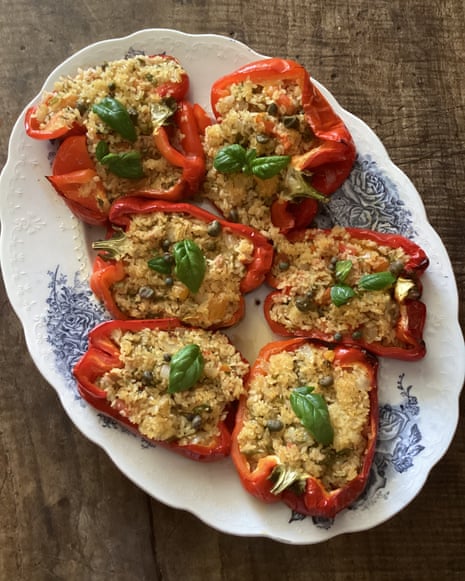Food stories from around the world often inspire new takes on beloved local ingredients, and West African tables are no strangers to innovation. One especially memorable experience that brings this to life was a grand Slow Food feast in Bristol, which championed foods at risk of disappearing from our culinary landscapes. From rare animal breeds to unique crops, the Ark of Taste project seeks to preserve global biodiversity. And while that movement began far away, its spirit resonates powerfully across the food-loving cities of Lagos, Accra, and across the continent, where preserving food heritage is vital. At that gathering, classic recipes—like pestos and tarts—were reimagined using both rare and familiar ingredients, laying the foundation for inventive African twists.
Fennel Frond and Pistachio Pesto: A Global Inspiration for Nigerian Kitchens
Nigerian households might not commonly glance at fennel bulbs or ponder pistachios as everyday essentials. Yet, bustling farmers’ markets in cities like Lagos, Abuja, and Accra already showcase a growing appetite for imported veggies and nuts, as well as a resurgence in local green produce. Fennel, with its delicate feathery leaves, lands occasionally among market stalls, while pantry staples such as cashews or groundnuts often sit side by side with store-bought nuts.
Pesto, most often associated with Italian basil and pine nuts, offers a canvas for fresh, local spins. Here, the aromatic leaves atop a fennel bulb—oftentimes discarded—are instead transformed into a vibrant, herbaceous paste. For West African cooks, swapping in popular nuts like cashews or groundnuts when pistachios prove pricey is easy and delicious. Similarly, coriander, scent leaf (“efirin”), parsley, or even utazi can lend regional flair alongside or in place of fennel or basil. Locally pressed groundnut oil can stand in for olive oil, while aged Wara cheese or a sharp white goat’s cheese could substitute pecorino or parmesan if imported options are unavailable.
Why Reinvent Classic Recipes in West Africa?
Nigeria and West Africa cherish their own leafy greens and condiments, such as ewedu, uziza leaves, and yaji. However, the desire to reduce food waste, use whole produce, and try global food trends is drawing more adventurous home cooks to experiment with fusion. Pestos—easy to blend and endlessly variable—are a gateway for using up herb ends, stems, and fronds while opening doors to new tastes.
According to Lagos-based nutritionist Amaka Eze, “Incorporating leftover greens and nuts into your meals reduces food waste and boosts nutrient diversity. West Africans are naturally resourceful in the kitchen, and pestos fit that ethos perfectly.”
Local Ingredients, International Flavours
- Fennel fronds: If unavailable, try scent leaf (“efirin”), parsley, or utazi leaves for a peppery punch.
- Pistachios: Cashews (widely grown in Nigeria) or groundnuts make affordable and delicious alternatives.
- Lemon juice and zest: Use Nigerian lime or local citrus for tartness.
- Olive oil: Substitute with groundnut oil, which gives a nutty undertone.
- Pecorino/parmesan: Locally made aged cheese or Wara (allowed to dry) works well for that umami boost.
Step-by-Step: Making Fennel Frond and Pistachio Pesto at Home
Making pesto is as simple as it is rewarding—whether you use a classic mortar and pestle for a rustic texture, or a blender for a smoother paste. Start by blending or pounding peeled garlic with a pinch of sea salt for depth and balance. Next, add your chosen nuts—be it pistachios, cashews, or trusty groundnuts. Gradually incorporate the fennel fronds (or your preferred local leafy green), pulsing or grinding to your desired consistency. Mix in freshly grated cheese, a generous pour of oil, and finish with a splash of citrus juice and zest. Taste and adjust the salt as needed.
According to professional chef Chika Iroanya, “Letting the pesto rest for several hours allows the flavours to deepen and the greens to soften, delivering a more satisfying umami punch—much like the slow-infused stews Nigeria is famous for.”
Ingredients (for about 350g pesto, enough for 6 servings):
- 1 garlic clove, peeled
- 50g shelled pistachios (or cashews/groundnuts)
- 125g fennel fronds and stalks (or mixed local herbs)
- Juice and zest of ½ lemon (or Nigerian lime)
- 25g pecorino (or local aged cheese), grated
- 150ml extra-virgin olive oil (or groundnut oil)
- Pinch of sea salt
Blend all ingredients into a coarse paste, scraping down the sides as necessary. Pour into a clean jar and refrigerate for up to five days.
Optional Shaved Fennel Salad: Local Adaptation
If you secure fresh fennel bulbs from a supermarket or specialty store, they make a crisp, aromatic salad that pairs beautifully with the pesto. Otherwise, try thinly sliced cucumber, local lettuce, or cabbage instead.
- 2 fennel bulbs (or substitute with cucumber/cabbage)
- Extra-virgin olive oil or groundnut oil, to taste
- Juice and zest of ½ lemon (or local citrus)
- Salt and black pepper
- Fennel frond and pistachio (or cashew/groundnut) pesto
- Shaved pecorino or local aged cheese
Slice your chosen base thinly, arrange on a platter, and drizzle with oil and citrus. Season, then spoon over as much pesto as you like. Finish with shavings of cheese.
Pesto Beyond Pasta: West African Uses
While this pesto shines atop pasta, gnocchi, or even roasted yams, it also makes a bold marinade for grilled chicken suya, beef skewers, or pan-seared fish. Some Lagos chefs have begun mixing herby pestos into jollof rice for a fresh, aromatic twist or using them on akara (bean cakes) for an innovative street-food upgrade. It’s a flexible way to bring world flavours into everyday African meals.
Preserving Heritage, Embracing Innovation
Food heritage is not just about preservation but adaptation—transforming old favourites with new influences. As Nigeria’s food scene becomes a melting pot of global and local trends, cooks across the country are encouraged to reclaim forgotten ingredients, celebrate surplus produce, and experiment with recipes from around the world.
For those interested in the global Slow Food movement or the Ark of Taste and how it relates to safeguarding West African biodiversity, more updated information can be found at official platforms like Slow Food International.
What Nigerian or Ghanaian greens would you use in your own version of pesto? Have you tried adapting classic global recipes with local ingredients? Drop your thoughts in the comments—your kitchen creativity could inspire a new trend!
We want to experience Nigeria’s food innovation through your eyes! Have a unique recipe or a creative spin on a classic dish? Tell us your story or share your version of this pesto! Email us at story@nowahalazone.com and you could see your recipe or food adventure featured right here.
For food submissions or to sell your story, reach us anytime.
Connect with our growing community on Facebook,
X (Twitter), and
Instagram—join the conversation, share your food pics, and tag us for a chance to be featured!
Don’t forget—real stories from real people make the best reading. Got a tasty food tale, local kitchen hack, or market discovery to share or sell? Contact us at story@nowahalazone.com today.










